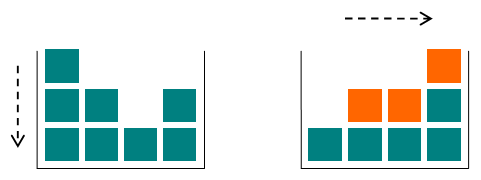标签:style blog class code ext color
Little Chris is bored during his physics lessons (too easy), so he has built a toy box to keep himself occupied. The box is special, since it has the ability to change gravity.
There are n columns of toy cubes in the box arranged in a line. The i-th column contains ai cubes. At first, the gravity in the box is pulling the cubes downwards. When Chris switches the gravity, it begins to pull all the cubes to the right side of the box. The figure shows the initial and final configurations of the cubes in the box: the cubes that have changed their position are highlighted with orange.

Given the initial configuration of the toy cubes in the box, find the amounts of cubes in each of the n columns after the gravity switch!
The first line of input contains an integer n (1?≤?n?≤?100), the number of the columns in the box. The next line contains n space-separated integer numbers. The i-th number ai (1?≤?ai?≤?100) denotes the number of cubes in the i-th column.
Output n integer numbers separated by spaces, where the i-th number is the amount of cubes in the i-th column after the gravity switch.
4 3 2 1 2
1 2 2 3
原来可以这么改变gravity,形成这样的效果的,有意思。
不过题解却是很容易的,就是一个排序问题,O(∩_∩)O~,但是没看到这样的题目还真没想过。
void GravityFlip()
{
unsigned n;
cin>>n;
int *A = new int[n];
for (unsigned i = 0; i < n; i++)
{
cin>>A[i];
}
sort(A, A+n);
for (unsigned i = 0; i < n; i++)
{
cout<<A[i]<<‘ ‘;
}
delete [] A;
}
codeforces Gravity Flip 题解,布布扣,bubuko.com
标签:style blog class code ext color
原文地址:http://blog.csdn.net/kenden23/article/details/24832151